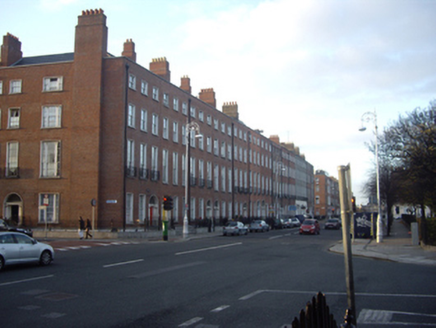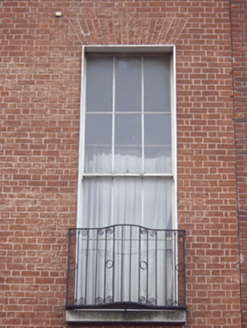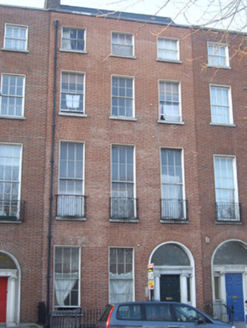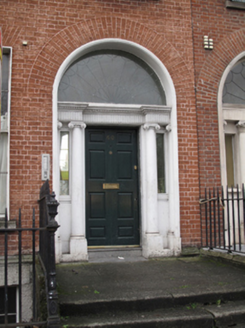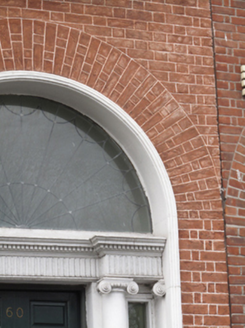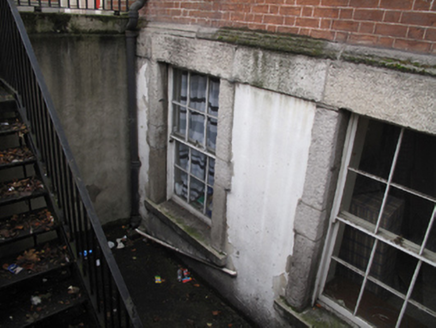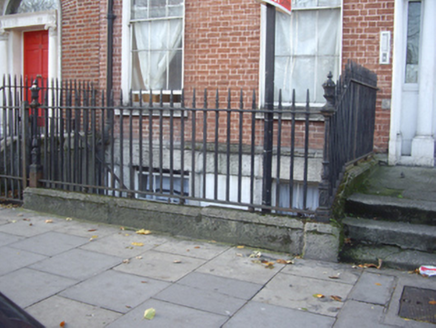Survey Data
Reg No
50010952
Rating
Regional
Categories of Special Interest
Architectural, Artistic
Original Use
House
In Use As
Apartment/flat (converted)
Date
1795 - 1805
Coordinates
315991, 235372
Date Recorded
30/11/2011
Date Updated
--/--/--
Description
Terraced three-bay four-storey house over exposed basement, built c.1800. Now in multiple occupancy. Replacement raised pie-ended roof with slate pitch to front and rear behind parapet wall with granite coping and cast-iron hopper and downpipe breaking through to south. Stepped brick chimneystacks with clay pots to both party walls. Red brick walls laid in Flemish bond, recently re-pointed with moulded granite plinth course over rendered basement walls. Cement rendered walls to the rear elevation. Gauged brick flat-arched window openings with patent rendered reveals, granite sills and replacement timber sliding sash windows, six-over-six pane to lower floors and three-over-three pane to top floor. Replacement iron balconettes to first floor and granite surrounds to basement windows. Pair of round-headed stair hall windows to rear elevation with timber sliding sash windows. Gauged brick round-arched door opening with moulded stucco surround and painted stone Ionic doorcase. Replacement timber paneled door flanked by engaged Ionic columns on plinth bases, slender sidelights and quarter engaged Ionic pilasters supporting stepped and fluted lintel cornice and replacement fanlight. Door opens onto granite platform and three granite steps bridging basement. Platform and basement enclosed by replacement iron railings on moulded granite plinth wall. Replacement iron gate providing access to basement via steel steps. Rear site developed along with No. 61.
Appraisal
No. 60 is one of only six original houses to survive on this terrace. It has been divided into apartments but has retained its original staircase and some plasterwork. A classical doorcase provides the decorative focus and the iron balconettes add further decorative interest. The retention of timber sash windows, together with the stone steps and plinth, and ironmongery to the entrance and basement area contributes to its architectural heritage quality, so that the building plays its part in maintaining the integrity of the square as a whole. Mountjoy Square was built on lands formerly belonging to Saint Mary’s Abbey, laid out in 1790 by Luke Gardiner II and complete by 1818. Originally called Gardiner Square the plan was to develop a strong vista from Custom House to Mountjoy Square. Unlike other Georgian squares in the city, this example was more carefully laid out with a unified parapet height and the east-west approaches offset to create a sense of enclosure. After falling into serious neglect and dereliction throughout the twentieth-century resulting in the loss of one third of its original buildings, the square has since been rebuilt.
